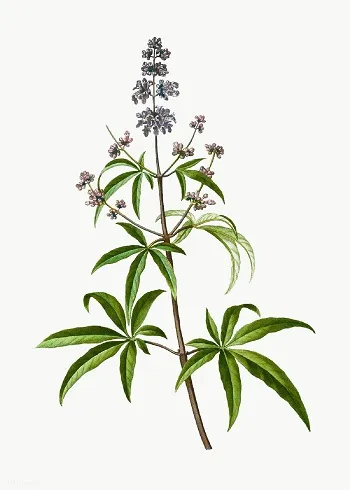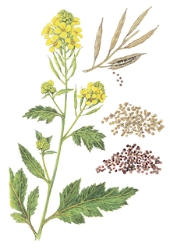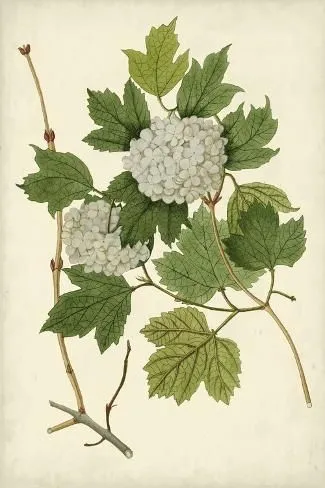I'm featuring Mustard today, because Mustard Greens are in season again in the fall and my holiday meals would certainly be incomplete without them!

Several varieties of mustard may be found and generally speaking, they are the feral descendants of garden mustard. Mustard seeds are very small and the plant easily escapes from the garden, perhaps with the help of a bird. In early America, Mustard was a popular potherb – it still is in the South. Mustard was also grown for the seed, that is used to make the Mustard condiment and was used medicinally. Mustard is my favorite cooked green! I also like to make the condiment from the seeds.
Even modern garden Mustards, that have been bred to be more mild and tender, are very hot when eaten raw. Raw Mustard leaves have the same spiciness as horseradish. When cooked as a potherb, the leaves become far more mild and only slightly bitter. Served with hot pepper vinegar, they are the perfect accompaniment to a pork chop, fried chicken, or most anything really… greens such as mustard are a true southern staple.
The only real difference in the “wild” Mustards and those that are cultivated is that they have somewhat regressed. The feral Mustards are tougher and often quite a bit hotter. Even eating a small amount raw would be very difficult for most people. Cooked, they just take a little more chewing, but you will need to remove the stems (unlike the cultivated Mustards). The extra chewing is well worth it. Wild mustards have a lot of flavor.
Cooked Mustard Greens (the way my mother and grandmother, etc. cooked them):
Ingredients:
Fatback or Bacon
A large amount of washed, but not dried, Mustard Greens… a pound per person would be right for me.
Salt
Hot Pepper Vinegar
The recipe is very simple. Render some fat from your pork in a large pan. Remove the meat. After ensuring that all the sand/dirt is washed from your mustard Greens, add them to the pan a handful at a time and lightly salt (use less salt if you use fatback). They will still be wet and will steam and cook down quickly. Just turn them in the fat as they cook. NEVER put a lid on the pan! All members of the brassica family release sulfur gasses as they cook. These must be allowed to gas off. Whether Mustard, collards, turnip, etc. greens, if the lid is on while cooking they will turn brownish and the good flavors of the greens will be destroyed. Some people cook their greens with broths, spices, sugar, etc. to counteract this, but all that is necessary is just to cook them uncovered. Cooked properly, the greens will have a bright green color and a fresh, bright, sweet/bitter taste that is a true delight. Of course, you can add whatever you like in terms of seasonings. But, there is no need to try to compensate for flavor if you do it right. When your greens are cooked tender enough for your teeth, plate them and top with hot pepper vinegar (vinegar in which peppers have been pickled). I would recommend some cornbread on the plate, as well!
The Condiment
In my rarely humble opinion, wild Mustard seed makes the best mustard condiment. In the old books, you will find many recommendations about selecting, black, brown or white mustard seed depending on your tolerance for heat/spice. Wild Mustards are not so specific… likely several varieties have crossed many times, and perhaps even with closely related plants that are not specifically Mustard – the brassica family is very large, and includes both wild plants and garden vegetables. Wild Mustard seeds are hot and bold. You can make a better Mustard condiment than most anything you can buy in a store simply by filling a jar about half full of whole seeds and adding a good quality vinegar with some salt. But if you use Wild Mustard seed, I believe you will find a depth of flavor you never imagined!
The ingredients for Mustard are basically anything you might like to add to the basic ingredients of seeds, vinegar and salt.
In terms of vinegar, you could use any wine vinegar, rice wine vinegar or apple cider vinegar. I would not use balsamic, as it is too sweet and thick, but if you wanted a sweeter mustard, sherry vinegar might be nice. Malt vinegar makes a very British tasting mustard. White wine vinegar and some white wine makes a nice French, Dijon style. Both of those use finely ground Mustard seeds. If you wanted a whole grain, German style Mustard, leave the seeds whole, use the vinegar of your choice and perhaps some dark beer, along with grated horseradish. You can flavor your vinegars with herbs – tarragon is especially good – or add herbs right into your Mustard. You can make it hot, sweet, sour, aromatic… whatever you like! What I like to do is to make a fermented Mustard, by mixing salt and sour kombucha into my mustard seeds, with a few herbs and a teaspoon of sugar to feed the bacteria and yeast in the ferment. I usually add some black pepper corns and some dried hot pepper to really spice it up… maybe some ginger and garlic, too. I ferment it until it stops bubbling, let it age for a bit in the fridge and yes… it is AMAZING!
Mustard Greens seem to be used far more in Asian cooking than in modern European cooking. It seems the Chinese, Koreans, etc. appreciate Mustard greens almost as much as traditional Southerners! In most any Asian grocery you will find pickled Mustard greens. These are fermented, much like cabbage in sauerkraut. Of course, different cultures add different spices and flavorings, but I have yet to discover pickled mustard greens that were heavily spiced, like cabbage is in kimchi. I make pickles or kraut out of all brassicas. Right now, I am fermenting collard stems! I don't know exactly how the Chinese or Japanese pickle their mustard, but I have had very good results doing a simple kraut method. With my hands, I work in about a tablespoon full of plain salt per pound of greens in a big bowl, bruising them, until the leaves and tender stems are bruised enough to exude a brine. Once that is done, I pack the greens into a jar, pressing out all air and cover them with the brine. I place the open end of a rubber glove over the mouth of the jar and secure it in place with a rubber band. This prevents air from getting into the ferment, but allows carbon dioxide to gas off as the greens ferment. They are ready to eat in about 10 days, but even better after a month or so.
Another popular use for Mustard greens in several Asian countries is to include them in soup. I generally make a simple chicken broth using the carcass and leftover bits of meat from a roast chicken or turkey. Once that is boiled down and the meat has come off of the bone, I pick out all the bones and bits I wouldn't want in my soup. I add garlic, onions and ginger, celery, mushrooms and a pinch of cilantro. A dash of 5 Spice or a tiny grate of star anise, clove and cinnamon is also very good. I like to include an amount of hot, crushed red pepper that is probably more than most folks would enjoy. Salt and pepper the broth to taste. Then, toss in your washed and chopped mustard greens. How much you use is entirely up to your taste. A few water chestnuts go well, as well. I usually simmer this soup until all the flavors come together and then toss in some pasta – anything from egg noodles or spaghetti to real Asian noodles. Rice noodles are a true favorite, but even ramen is fantastic (just leave out the nasty little flavoring packet that comes with most cheap ramen noodles in American markets). Once in the bowl, I add some soy sauce and toasted sesame seed oil to taste. It is a fantastic soup and also a very good way to use the bones and carcass of leftover chicken or even pork chops. While Mustard greens are my favorite for this soup, I'll toss most anything in there from dandelion and chicory leaves to cabbage and spinach.
This article is an excerpt from
The Spring Foraging Cookbook:
https://southernappalachianherbs.blogspot.com/2024/01/the-spring-foraging-cookbook.html
Available for purchase on Amazon:
https://www.amazon.com/dp/B0CRP63R54
Also, I am back on Youtube. Please subscribe to my channel: @judsoncarroll5902 Judson Carroll - YouTube
PS. New today in my Woodcraft shop:
Toasted Holly Coffee Scoop
Toasted Holly Coffee Scoop - Judson Carroll Woodcraft
https://judsoncarrollwoodcraft.substack.com/p/toasted-holly-coffee-scoop
Read about my other new books:
Herbal Medicine for Preppers, Homesteaders and Permaculture People:
https://southernappalachianherbs.blogspot.com/2021/10/herbal-medicine-for-preppers.html
Available on Amazon: www.amazon.com/dp/B09HMWXL25
Medicinal Ferns and Fern Allies, an Herbalist's Guide
https://southernappalachianherbs.blogspot.com/2022/11/medicinal-ferns-and-fern-allies.html
Available for purchase on Amazon:
https://www.amazon.com/dp/B0BMSZSJPS
A Daily Catholic Devotional Reflections on the Daily Mass readings July-December, 2025
https://southernappalachianherbs.blogspot.com/2023/12/a-daily-catholic-devotional-reflections.html
Medicinal Weeds and Grasses of the American Southeast, an Herbalist's Guide
https://southernappalachianherbs.blogspot.com/2023/05/medicinal-weeds-and-grasses-of-american.html
Available in paperback on Amazon:
https://www.amazon.com/dp/B0C47LHTTH
and
Confirmation, an Autobiography of Faith
https://southernappalachianherbs.blogspot.com/2023/05/confirmation-autobiography-of-faith.html
Available in paperback on Amazon:
https://www.amazon.com/dp/B0C47Q1JNK
and
Medicinal Shrubs and Woody Vines of The American Southeast An Herbalist's Guide
Read about Medicinal Shrubs and Woody Vines of The American Southeast An Herbalist's Guide:
https://southernappalachianherbs.blogspot.com/2022/06/medicinal-shrubs-and-woody-vines-of.html
Available for purchase on Amazon:
https://www.amazon.com/dp/B0B2T4Y5L6: by Judson Carroll
Visit my Substack and sign up for my free newsletter:
Judson Carroll, Master Herbalist
Herbal Medicine
Read about my new other books:
Medicinal Ferns and Fern Allies, an Herbalist's Guide
https://southernappalachianherbs.blogspot.com/2022/11/medicinal-ferns-and-fern-allies.html
Available for purchase on Amazon:
https://www.amazon.com/dp/B0BMSZSJPS
The Omnivore’s Guide to Home Cooking for Preppers, Homesteaders, Permaculture People and Everyone Else:
https://southernappalachianherbs.blogspot.com/2022/10/the-omnivores-guide-to-home-cooking-for.html
Available for purchase on Amazon:
https://www.amazon.com/dp/B0BGKX37Q2
Medicinal Shrubs and Woody Vines of The American Southeast an Herbalist's Guide
https://southernappalachianherbs.blogspot.com/2022/06/medicinal-shrubs-and-woody-vines-of.html
Available for purchase on Amazon
https://www.amazon.com/dp/B0B2T4Y5L6
and
Growing Your Survival Herb Garden for Preppers, Homesteaders and Everyone Else
https://southernappalachianherbs.blogspot.com/2022/04/growing-your-survival-herb-garden-for.html
https://www.amazon.com/dp/B09X4LYV9R
The Encyclopedia of Medicinal Bitter Herbs:
https://southernappalachianherbs.blogspot.com/2022/03/the-encyclopedia-of-bitter-medicina.html
Available for purchase on Amazon:
https://www.amazon.com/dp/B0B5MYJ35R
and
Christian Medicine, History and Practice:
https://southernappalachianherbs.blogspot.com/2022/01/christian-herbal-medicine-history-and.html
Available for purchase on Amazon: www.amazon.com/dp/B09P7RNCTB
Podcast:
https://www.spreaker.com/show/southern-appalachian-herbs
Blog:
https://southernappalachianherbs.blogspot.com/
Free Video Lessons: Herbal Medicine 101 - YouTube
Disclaimer
The information on this site is not intended to diagnose or treat any disease or condition. Nothing on this site has been evaluated or approved by the FDA. I am not a doctor. The US government does not recognize the practice of herbal medicine and their is no governing body regulating herbalists. Therefore, I'm just a guy who studies herbs. I am not offering any advice. I won't even claim that anything I write is accurate or true! I can tell you what herbs have "traditionally been used for." I can tell you my own experience and if I believe an herb helped me. I cannot, nor would I tell you to do the same. If you use any herb I, or anyone else, mentions you are treating yourself. You take full responsibility for your health. Humans are individuals and no two are identical. What works for me may not work for you. You may have an allergy, sensitivity or underlying condition that no one else shares and you don't even know about. Be careful with your health. By continuing to read my blog you agree to be responsible for yourself, do your own research, make your own choices and not to blame me for anything, ever.












